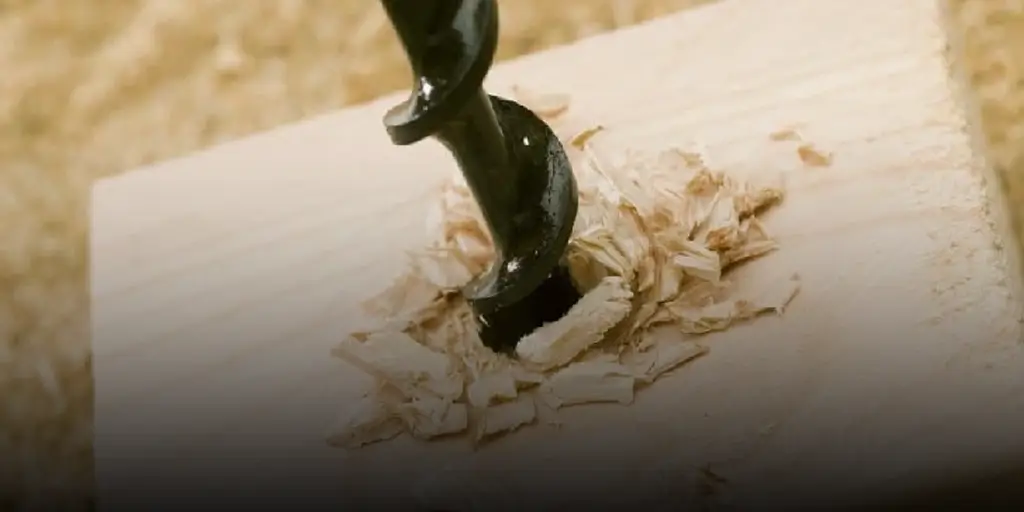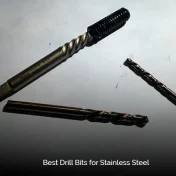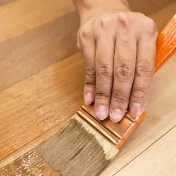Have you ever been in the middle of a satisfying DIY project, only to be halted by a drill bit that just won’t budge?
Whether it’s stubbornly stuck in the drill, tenaciously trapped in wood, or wedged within a wall, this common conundrum can quickly turn your DIY dream into a nightmare.

But fear not, fellow DIY enthusiasts! The solution is often simpler than you think and doesn’t require a call to a professional.
In this guide, we’ll delve into various scenarios where drill bits get stuck and offer you step-by-step instructions on how to free them.
By the end, you’ll be equipped with the knowledge and confidence to tackle this issue head-on, ensuring smoother sailing in all your future drilling endeavors.
Essential Tools for the Rescue
Before diving into the specifics of drill bit liberation, it’s crucial to arm yourself with the right tools.
Having these tools at your disposal not only makes the process more manageable but also reduces the risk of damaging either the drill bit or the surface you’re working on.
Here’s a list of essential tools you’ll need:
Channel Lock Pliers: These pliers are perfect for gripping and turning larger objects, such as the chuck of a drill. Their adjustable jaws allow them to fit around various sizes, making them versatile for different scenarios.
Vice Grips: Similar to channel lock pliers, vice grips offer a locking mechanism that can hold objects securely, providing extra leverage when needed.
Standard Pliers: For smaller or more delicate operations, standard pliers offer precision and control.
Protective Materials: Consider having a towel or soft rag on hand to wrap around the chuck or drill bit. This prevents scratches or damage, especially important if you’re dealing with delicate surfaces or expensive tools.
Screw Extractors: In cases of broken drill bits, a screw extractor can be invaluable. It’s designed to grip and remove screws or bits that are stuck.
Hammer and Screwdriver: These are essential for the technique of drilling out a stuck bit.
Needle-Nosed Pliers: Ideal for intricate work, especially if you’re dealing with a broken bit that’s hard to reach.
Equipped with these tools, you’ll be ready to tackle most scenarios involving a stuck drill bit.
Releasing a Drill Bit Trapped in the Drill
When a drill bit gets stuck in the drill, it can feel like a deadlock. However, with the right approach, you can free it without damaging your drill or the bit.
Here’s how to do it:
Secure the Drill: First, ensure your drill is off and disconnected from any power source. Safety first!
Use Channel Lock Pliers: Grip the chuck of the drill (the part that holds the bit) with your channel lock pliers. If the chuck is plastic, consider wrapping it in a towel to prevent damage. Adjust the pliers so they fit snugly but don’t crush the chuck.
Apply Counter-Clockwise Force: Gently but firmly turn the pliers counter-clockwise. This motion should loosen the chuck and, in turn, the drill bit. If the bit is misaligned, it may need some wiggling. Be patient and avoid forceful actions that could damage the drill or the bit.
Extract the Bit: Once loosened, remove the bit from the chuck. If it doesn’t come out easily, use standard pliers to carefully wiggle and pull it out. Remember, if your drill bits are high-quality or specially coated, be extra cautious to avoid dulling the edges.
This method works well for most standard drills. However, if the bit is stubbornly stuck, consider securing the drill in a vice and then using the pliers for additional leverage.
Extracting a Drill Bit from Wood, Walls, or Other Materials
Sometimes, the challenge lies not in the drill itself but in the material you’re working with.
Here’s how to carefully extract a drill bit that’s stuck in wood, a wall, or other types of materials:
Assess the Situation: Determine how deep the bit is stuck and whether any part of it is accessible. The approach may vary slightly depending on whether you’re dealing with wood, drywall, or other materials.
Grip with Pliers: If there’s enough of the drill bit protruding, clamp your pliers onto the visible part of the bit, preferably near the base for maximum leverage. Be mindful of the bit’s condition; if it has a twisty section exposed, gripping it might dull the bit.
Apply Counter-Clockwise Pressure: Once you’ve secured the pliers, turn them counter-clockwise. This action should help loosen the bit. If the bit is stuck in a wall,positioning the pliers to push down rather than pull up can sometimes provide better leverage.
Wiggle and Remove: After loosening, the bit may require some wiggling to be fully removed. Continue to use the pliers, applying gentle pressure to ease the bit out of the material.
In scenarios where the bit is deeply embedded, a different approach might be needed, such as drilling around the stuck bit or using a screw extractor.
Always evaluate the situation and choose the method that minimizes damage to both the bit and the material.
Rescuing a Broken Drill Bit
Dealing with a broken drill bit can be tricky, but it’s not a lost cause. Here are some strategies to extract a broken piece:
Evaluate the Break: Check how much of the drill bit is exposed. If a portion is sticking out from the material, you might be able to use pliers to grip and gently wiggle it out.
Drilling Out the Bit: If the broken bit is deeply embedded and accessible from the other side, consider drilling it out. Flip the material over and drill a hole directly opposite the stuck bit.
This approach allows you to push out the broken piece from the other side. Be mindful that this method might dull your drill bits.
Using a Screw Extractor: For larger diameter bits, a screw extractor can be effective. Drill a small hole into the top of the broken drill bit, insert the screw extractor, and use your drill in reverse to pull the broken piece out. This method requires patience and a steady hand.
The Hammer and Screwdriver Technique: If you have drilled a hole opposite the stuck bit, you can try inserting a screwdriver into this new hole and gently hammering against the broken bit to dislodge it.
An Alternative Method: If the above methods aren’t suitable, consider drilling a larger hole around the stuck bit and then using a chisel or similar tool to carefully expose more of the bit. Once enough of the bit is exposed, use needle-nosed pliers to pull it out.
When attempting to remove a broken drill bit, proceed with caution to avoid causing further damage to your material or tools.
People Who Want to Read This Article: 4 Innovative Ways to Extend Your Drill or Drill Bit
Wrapping Up: Your DIY Success
Successfully removing a stuck or broken drill bit is a significant accomplishment in any DIY journey. It not only saves you time and resources but also boosts your confidence in handling future challenges.
As we conclude this guide, let’s recap the key points to ensure your ongoing success in DIY projects:
- Preparation is Key: Always start with the right tools and safety measures in place. This preparedness can make a significant difference in how effectively and safely you can tackle the problem.
- Patience and Precision: Whether dealing with a stuck bit or a broken one, a patient and precise approach is more effective than forceful actions. Remember, it’s about finesse, not brute force.
- Learning from Experience: Each challenge you overcome adds to your skills and knowledge. Over time, these experiences accumulate, turning you into a more capable and confident DIY enthusiast.
- Sharing Knowledge: Don’t forget to share your experiences, successes, and even failures with the community. Your insights could be invaluable to someone facing a similar issue.
- Continual Learning: The world of DIY is vast and ever-evolving. Stay curious and open to learning new techniques and solutions. There’s always something new to discover.
Remember, every problem you solve on your own adds to your repertoire of DIY skills. It’s these challenges and their solutions that transform you from a beginner into a seasoned DIY enthusiast.
Embrace these moments – they’re what make the journey truly rewarding.



